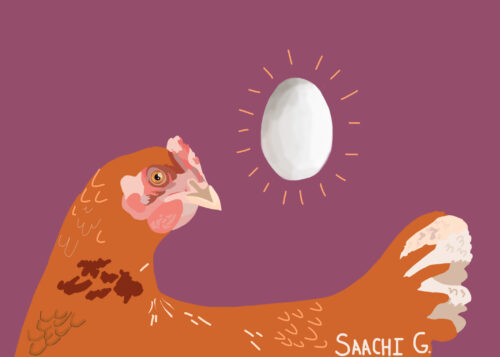Over millennia, the egg has evolved to become one of the most adaptable shapes in nature: strong, small enough for safe delivery, and capable of surviving in extreme conditions. This distinctive shape has long been a subject of fascination among researchers. “[We are investigating] whether some mathematical laws were designed first and nature was created in accordance to them, or vice versa,” said Valeriy Narushin, a researcher at Vita-Market Ltd and the Research Institute for Environment Treatment in Ukraine. Narushin’s recent work on developing a universal mathematical formula for egg shape demonstrates a collaboration between biologists, engineers, and scientists, united by a common desire to crack the mystery of this unique natural phenomenon.
There are four main categories of egg shapes: circular, elliptical, oval, and pyriform. The most commonly recognized egg shape, which we encounter in chicken eggs, is the oval. “As for me personally, I like pyriform, or speaking in mathematical language, conical eggs. These are laid by some species of waders and guillemots,” Narushin said. Pyriform, in contrast to the oval, is a more unconventional “pear-like” or pointed shape. There are many hypotheses as to why certain types of eggs evolved this way, ranging from their structural integrity to their ability to fit into nests efficiently, but there is no clear explanation yet as to why some eggs converged to a pyriform shape over time.
At first glance, it may seem quite straightforward to map the shape of an egg using mathematical equations. However, while these equations are very good at creating idealized egg shapes that can be used in art and architecture, they fall short when it comes to tracing a real egg. Thus, the challenge was to deduce a universal mathematical formula that corresponds to all types of egg shapes and is easily transferable between geometrical figures.
The researchers successfully developed a more complex, universal formula based on measurements of the egg length, maximum breadth, vertical axis shift, and diameter at one quarter of the egg length. This formula allows them to theoretically describe any avian egg, keeping in mind that small discrepancies are to be expected due to the diversity of eggs as a natural object. Importantly, the formula can describe the shape of any of the four egg types—a feat that has never before been achieved to this level of accuracy.
In the process of collecting data for this study, the researchers also furthered a more comprehensive project aimed towards sustainable and nondestructive methods of egg evaluation. “Elaboration of non-destructive methods for testing eggs is the basic goal of our research group, which we call the ‘Eggy-team,’” Narushin said. The researchers used images instead of actual eggs whenever possible and did not handle any endangered or wild bird eggs. This is part of a long-term goal: the development of non-invasive research methods can improve poultry management and environmental conservation efforts.
But why the obsession with eggs? “According to Professor Tim Birkhead, [eggs] are the most perfect things on the Earth. And we fully agree with him. From ancient times, eggs were used as cult objects in art, architecture… etc. And of course, an egg is an excellent food used in more than ten-thousand recipes,” Narushin said.
The study of eggs has far-reaching impacts. In the food industry, egg density and the ratio of egg weight to surface area are crucial in considering egg freshness, shell thickness, storage conditions, and incubation success. “If you know a geometrical formula of a given egg, it’s rather simple to recalculate all these parameters (curvature, a longitudinal length and others) with equations of the integral geometry,” Narushin said.
The egg also provides a source of architectural inspiration. “The egg profile has several advantages for architects due to its harmonic shape, relative strength, and minimal consumptions of building materials,” Narushin said. “Famous egg constructions include The National Centre for the Performing Arts in Beijing and the Gherkin in London.” From food science to art, the egg has an influence far beyond what its humble appearance may suggest.
Now that this universal formula has been found, what lies in the future of oomorphology? “The first [investigation] is based on deducing universal formulae for calculating volumes and surface areas of different egg types, and their ingression into the principles of mathematical evolution,” Narushin said. “The second one is related to the study of shell mathematical secrets. Why is the shell relatively thick in some species and thin in others? Hope we can propose some results very soon.”
So the study of eggs continues, one formula at a time.

